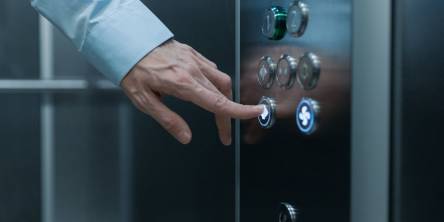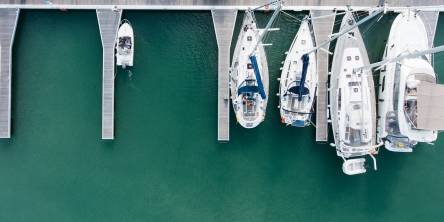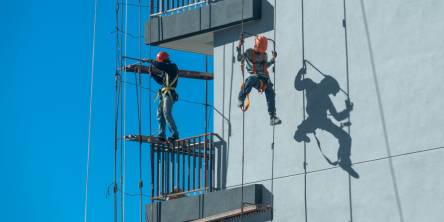The Ultimate Guide to Fiber Optic HDMI Cables: Revolutionize Your Home Theater Experience

Explaining Fiber Optic Technology Used in HDMI Cables
Using fiber optic technology, HDMI cables can transmit video and audio signals without compromising on quality over extensive distances. In comparison to the older type of HDMI cables that employ electrons to send electric info over long distances, modern HDMI cables utilize fiber optics which enables the transmission of optical signals. This change brings with it numerous benefits such as increased bandwidth, lesser signal loss and elimination of electromagnetic interference.
For more in-depth information, you should read some of the informative articles on popular websites like fiber optic hdmi cable - AscentOptics.
Differentiating Between Fiber Optics And Copper HDMI Cables
The distinguishing factor for fiber optic HDMI cables and the traditional copper HDMI cables is the way they relay signals. Traditional copper cables send off signals through electricity which is prone to loss and deterioration over distance. On the other hand, fiber optic cables send off light signals to relay information, which enables faster and more stable transmissions. Fiber optic HDMI cables are ideal for long runs and even for installations where preserving signal quality is a priority.
A closer look at how fiber HDMI cables preserve signal quality over extensive lengths
There is a strong case to be made for the carrying capacity of fiber optic HDMI cables. Optical fibers effectively get rid of the signal degradation and signal loss that can be experienced with copper cables. Fiber optic cables transfer light efficiently enabling almost no interruption of light. This ensures maximum quality signal and makes the fiber optic HDMI cables ideal for setups like home theatres or conference rooms where signal quality becomes important for proper audio and visual experiences due to the requirements of long cables.
With the revolutionary use of fiber optic technology, these hdmi cables are perfect for your home theatres as they ensure great audio and visuals at long distances.
What are the benefits of using a fiber optic HDMI cable?
Audio and visual satisfaction include several features that distinguish the fiber optic hdmi cables from the copper cables. Here are some of the benefits to remember when considering investing in an hdmi device with a fiber optic connection:
From a bandwidth and data transfer standpoint, fiber HDMI cables allow much higher bandwidth than copper connectors, allowing for the transmission of large amounts of data without signal degradation. As a result, one can watch high-resolution content without any interruptions.
With the surge of 4k and 8k TVs and projectors and HDR content, fiber optic hdmi cables have been manufactured to sustain the high bandwidth requirements. They ensure you do not lose any of the breathtaking graphics and colors these formats provide.
EMI on fiber optic cables is nonexistent, meaning signal degradation is reduced. This is particularly important for installations with long cable runs, which come with distance-related signal degradation issues.
The use of HDMI cables ensures that they unlock the full potential of your home theater or conference room. The cables are incredibly reliable and perform exceptionally due to their integration with fiber optic technology.
How to choose the right fiber optic HDMI cable for your setup?
Length Consideration: Minimum of 50ft and minimum of 100ft and above
Length is another important aspect you should factor in, especially when purchasing a fiber optic HDMI cable. There are chances of signal degradation over long distance which is why longer cable runs are required to Fiber Optic HDMI cables. Fiber Optic HDMI cables are the best when it comes to sending signals over long distances especially if the HDMI cable exceeds the 50ft mark, 100ft and beyond.
Identifying HDMI 2.1 Specifics and its Compatibility
It is necessary to form a habit of checking to see if the device’s fiber optic HDMI cable supports the most current HDMI specifications in order to be prepared for the future. On the other hand, the HDMI 2.1 standard enables transmission of 4K and 8K displays, provides higher bandwidth, refresh rate and other features such as dynamic HDR and variable refresh rate high-performance technology (VRR). In regard to the previous point, only an HDMI 2.1 compatible Fiber Optic cable will allow you to fully utilize all the features of your devices.
Knowing The Brands: Monoprice and Cable Matters
If you are on the lookout for a fiber optic HDMI cable, there are certain brands that stand out. There is Monoprice and Cable Matters that manufacture high-end cables with excellent performance as well. More devices than not, these two brands have a lot to offer as well. However, there are also plenty of brands that have fiber optic HDMI cables that are suitable for your needs. While finalizing a brand, conduct customer research and reviews, and look at the warranty as well as the overall credibility of the brand in the market.
Hiring a brand such as Monoprice, or Cable Matters while looking through the length needs and the specifications under HDMI 3.0 can help ensure you at least have the right fiber optic HDMI cable suitable for your entirety setup, for an appealing experience overall.
Are fiber optic HDMI cables compatible with all devices?
Compatibility with 4K and 8K TVs, projectors, and gaming consoles
Fiber optic high-definition multimedia interface cables are specially designed to meet the rising demands of modern equipment like televisions, projectors, or gaming consoles that require a minimum of 4K and 8K video resolutions. All such devices are loaded with fiber optic HDMI cable supporting features such as uncompressed audio and video signal transmission with zero quality reduction. What this means is that all the movies, high-end gaming, and even business presentations look stunning with absolute image sharpness and impressive detail because the viewing experience offered is nothing short of spectacular. With the immense bandwidth and reliability provided, seamless connectivity becomes effortless.
Older televisions or consoles with fiber optic HDMI cables
There is still some good news for older generation device users as they can use fiber optic HDMI cables too alongside their older generation tools and consoles while the cables are backward compatible. Fiber optic HDMI cables allow older generation devices, including televisions, gaming consoles, and projectors, to be easily connected to modern devices. The great thing is these cables come with automatic insulation, meaning they manage the signal strength, reducing the chances of device malfunction. All in all, regardless of whether you are equipped with the latest versatile devices or older generation ones, fiber optic HDMI cables prove to be a great investment.
How to install and maintain fiber optic HDMI cables?
MPM recommends the following Best Practices for In-Wall Installation of Fiber Optic HDMI Cables:
1. Plan the Route
On a construction site, it is advisable to have only one person responsible for installing the cable as this will ensure that there are no bends or sharp angles on the HDMI to HDMI Fiber Optic Cables, enabling it to function at its optimum capacity.
2. Use Conduit
Protect the HDMI to HDMI Fiber Optic Cables with tubing or conduit, whenever possible, as this will help in providing an extra layer of protection, especially during installation and future maintenance of the cables.
3. Avoid Electrical Interference
When installing HDMI to HDMI Fiber Optic Cables, ensure that these cables are not located anywhere near electrical cables, as it will result in electromagnetic interference. Avoid aligning the cables in the same direction and instead cross them at a right angle or an L shape, as this will reduce interference.
4. Secure the Cable
Ensure that the cable has a clip-on mounted in thickness to reduce strain on the HDMI to HDMI Fiber optic cables. Use the right number of brackets, cable ties or clips, and ensure that the cable is attached to the wall or surfaces from one end to the other, as this will help prevent unnecessary strain on the cables.
Best Ways to Maintain and Safeguard Your Fiber Optic HDMI Cable
When using a fiber optic HDMI cable, do take notice of the following points in terms of its safety and performance:
- Be Gentle: While using a fiber optic HDMI cable, remember that these cables are fragile so bending, twisting or pulling these cables will damage them. So ensure that you minimize movement or jerky motions that may be considered unnecessarily rough for the internal fibers of the cable.
- Fault in the Connectors: Connectors on the cables are prone to faults, and/or damage. Whenever the cables are not in use it is advisable to keep the connectors shut in order to protect them from dust and other debris that would affect the strength of the connection.
- Do Not Overstretch: it is important to follow the guidelines of how much a fiber optic HDMI cable can be stretched so that it doesn’t get damaging because stretching or bending the cables too much can get damaging to such eletrical items.
How to Handle Issues with your Fiber Optic HDMI Connections
In case you run into problems with your HDMI connection, remember the few tips given below:
- Check Cables: Always ensure there is a ceramic connector crimped at either end of the cables and that both ends of the fiber optic HDMI are firmly secured to the source device or the display unit. If they are not, then intermittent loose connections can quickly and easily disrupt and cause a interruption in the function. Always try to re المناسب Lin techniqueamo Both ends. Seams can be an issue due to unintentional physical tension being applied to the interface.
- Look for Damages: Look for signs on the fiber cable which could include but are not be limited to cutting, kinking and shattering. These signs would indicate superficial damage which would lower the cable performance of the HDMI optimize significantly and in some scenarios even render it useless.
- Try Different Devices: Attempt to connect the fiber optic HDMI cable to other source and display devices in order to see if there are any issues with a specific device. This will allow you to isolate whether the defect is with the cable or a certain device.
If the best practices of installation, handling, and troubleshooting are followed, the optimal performance and durability of the fiber optic HDMI cable can be preserved and connectivity to your home theater system will not be an issue.
What's the difference between active and passive fiber optic HDMI cables?
In the world of HDMI cables, a new advancement has been introduced in the form of AOC cables. AOC cables are more versatile than passive HDMI cables as they incorporate advanced active components within the cable for signal amplification and regeneration due to the integrated technology. As a result, this technology enables AOC cables to achieve longer signal transmission distances without compromising the cable integrity.
You might be wondering by now, when should you consider and use an active fiber optic HDMI over a passive one? Well here are a few factors to help you make that decision:
Wider Coverage: In comparison to passive cables, AOC cables are made to support HDMI signals coverage for a longer distance. If your intention is to use the HDMI cable for large home theaters or commercial uses where quality and service for a long distance is required, then opting for an active HDMI cable would be ideal for you.
Signal Degradation Prevention: The built-in equalizer and signal regeneration mechanism that comes installed with AOC ensures that signal quality is retained which results in top tier performance for several applications when compared to passive cables.
Flexibility and Easy Installation: Active fiber optic HDMI cables have the edge over passive ones because they are much easy to install and less bulkier, as they are flexibly designed. This allows for easier routing which in turn provides ample ease during installation.
With that being said, because of the additional technological components and requirements involved, active optical cables tend to cost more than passive ones. It is recommended that you properly assess your needs and requirements and take into careful consideration the distance, signal quality and installation so that they can figure out whether the advantages of an active fiber optic HDMI cable are worth the price or not.
Once you know the benefits as well as the limitations of active optical cable technology, you will be able to make more educated choices in terms of the best suited fiber optic HDMI cables for your home theater system.
Are fiber optic HDMI cables worth the investment for home theater enthusiasts?
Investing in a fiber optic HDMI cable for your home theater might require a hefty sum compared to the regular cables, but it would help to consider the future benefits that the investment could provide. Traditionally, HDMI cables are usually cheaper, so a price comparison would be essential before making the decision to purchase it. Here are several pointers to getting started with investing in a fiber optic HDMI cable:
High Definition Quality: When it comes to video and audio quality, fiber optic hdmi cables beat the average HDMI cable by a long shot. Thanks to the fiber optic cables, you are able to transmit the signal over longer distances without worrying about any form of degradation that the sound or video might suffer.
Easy to Tuck: Fiber optic cables are much more slender in comparison with the average cables and as a result much easier to stealth out into tight spaces. The ease of access that they provide makes them much more user friendly and a good investment to make.
Inner Working Advancements: Thanks to the advancement in technology, the new fiber optic HDMI cables are able to support higher resolutions or data rates, which will immensely help with the home theater setup that you might have in mind. Furthermore, these factors contribute in perfecting the inner working of the cable which allows for a setup that is future proof meaning you won’t have to spend money anytime soon.
Undoubtedly, fiber optic HDMI cables are the most worthwhile investment for a home theater system. Although they may appear to have a higher price tag when compared to other HDMI cables, they provide improved transmission distance, better signal quality, and most importantly are future-ready. In order to get the most out of your home theater experience, it is imperative that you make the most suitable evaluation to identify your precise needs and also give appropriate attention to the functionality and lifespan benefits that fiber optic cables have to offer.
Similar Articles
When it comes to working at heights, safety and efficiency are paramount. Aerial work platforms (AWPs) have revolutionized how professionals approach elevated tasks across countless industries, from construction sites to warehouse operations.
The modern age of customers expect constant availability, no matter what the offer. And for that, the market requires rapid innovation cycles. In such a high stakes environment, technology infrastructure is more than just a cost center.
When evidence seals fail, cases weaken. Explore how compromised chain of custody can derail investigations and jeopardize justice.
Compare hydraulic and traction residential elevators to find the best fit for your home. Learn how each system works, their pros and cons, space needs, energy use, and maintenance requirements.
Extend the lifespan of your commercial marina docks with proactive maintenance. Learn essential inspection routines, material-specific care, and safety tips to protect your investment and ensure long-term dock performance.
Learn the key factors in designing an engineered fall protection system. Discover how hierarchy of controls, task analysis, structural integrity, and fall clearance ensure safety and compliance.
Today, modern businesses face constant pressure to operate with maximum efficiency. This requires a technology infrastructure that is both agile and robust. However, the traditional model of on-premises data centers often has significant limitations. These legacy systems can drain valuable resources from teams.
When people are hungry, standing in line for a table feels tiring and unpleasant. In fact, research shows that most individuals will just walk away if they have to wait longer. They will go and find another place to eat.
In the early stages of designing new community centers, fire stations and administration buildings, city planners and architects are forced to make a crucial decision: What building material is best suited for providing the most value, safety and longevity to the public?









